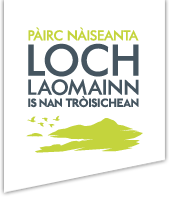
Blue-Green Algae in Lochs
Blue green algae blooms can occur at times in Lochs and you may be viewing this page because we have posted a warning on social media alerting people to its potential presence in an area of a Loch.
Blue-green algae can produce toxins that can kill dogs and other animals. In humans it can cause rashes after skin contact and illnesses if swallowed. So if we have posted a warning or if there are warning signs on the Loch shore, then people are advised to keep themselves and their pets and livestock out of the water.
Blue green algae can be a problem during the warmer months. The algae blooms can make the water become green, blue-green or greenish brown and several species can produce musty, earthy or grassy odours, and can also cause foaming on the shoreline.
We are often asked to advise when the warning is over. However this is difficult to predict, because blue green algae blooms can form on the water and dissipate again within hours or days, depending on the weather and the water temperature. The blooms normally form in warm still water, so they can form on a still morning around sheltered shore areas, but then get broken up by rain or waves if the wind picks up.
Due to this changeful nature of blue green algae blooms we recommend people err on the side of caution if they know there has been a warning in recent days.
Because of the risk to animals and humans, when we are notified that an algae bloom has been seen in an area of the Park, we post warnings online right away to let people know. We also inform the relevant local authority so they can post warning signs on the shorelines, and report it to SEPA.
If you believe you have spotted Blue-Green Algae and there are no warning signs present on the shore, please contact the environmental health team at your Local Authority. SEPA can also be contacted.

